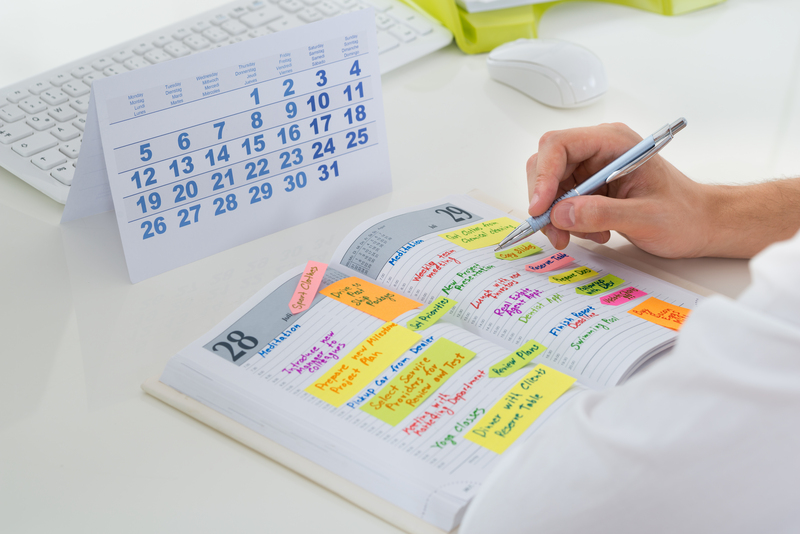Expert Tips for Moving Bed and Mattress Efficiently
Posted on 31/05/2025
Expert Tips for Moving Bed and Mattress Efficiently
When it's time to move to a new home, one of the most challenging tasks is transporting your bed and mattress. These bulky, awkward items require careful handling and proper planning to ensure they arrive safe and undamaged. In this comprehensive guide, you'll discover expert strategies for moving your bed and mattress efficiently--from preparation and packing to loading and setup. Whether you're tackling a local move or a cross-country relocation, the following practical tips and detailed steps will help you protect your investment and guarantee a restful sleep in your new space.
Why Properly Moving Your Bed and Mattress Matters
Your bed frame and mattress are essential household items, and damage during transit can lead to expensive repairs or replacements. Mattresses, in particular, are vulnerable to dirt, moisture, and sagging when not handled correctly. Using the right techniques and equipment ensures you not only save time and effort but also maintain hygiene and longevity for your sleep setup.
Common Challenges When Moving Beds and Mattresses
- Mattress is heavy, flexible, and can easily bend or tear.
- Bed frames are often large, cumbersome, and may require disassembly.
- Potential for scratches on walls, floors, or the furniture itself.
- Risk of injury from improper lifting techniques.
- Inadequate planning can lead to loss of vital screws or hardware.
To overcome these obstacles, you need a thoughtful approach based on expert insight and proven moving methods.

Preparation: Laying the Groundwork for a Successful Move
Gather the Necessary Supplies
Before you begin, assembling the right supplies for the move is crucial. Here's a comprehensive list:
- Mattress bag or cover (for protection from dirt and moisture)
- Furniture moving straps and lifting aids
- Tool kit (Phillips and flathead screwdrivers, Allen wrenches, pliers, small hammer)
- Bubble wrap or moving blankets (to cushion bed frame parts)
- Packing tape and zip ties
- Permanent marker and resealable bags (for labeling and storing hardware)
- Heavy-duty dolly or hand truck
- Work gloves for grip and protection
Plan Your Route
Measure doorways, staircases, and hallways in your current and new home. Identify the most efficient path for moving large items, clearing away obstacles ahead of time. This simple step prevents frustration or accidental damage.
Take Photos Before Disassembling
Use your smartphone to snap clear shots of how the bed frame is put together--especially if there are unique joints or hardware. Photos make reassembly much easier at your destination, saving you the frustration of hunting for original instructions.
Disassembling Your Bed Frame and Headboard
Start With Bedding and Accessories
- Remove all pillows, sheets, mattress protectors, and blankets. Place them in labeled bags or boxes for easy access later.
- If your bed features a canopy or decorative rails, detach these first, wrapping fragile parts in bubble wrap.
Disassemble the Bed Frame Carefully
- Remove the mattress and set it aside in a clean space.
- With a tool kit, unscrew and dismantle the headboard, footboard, and side rails, noting the order each piece is disconnected.
- If your bed frame includes slats or center supports, bundle and label them to avoid confusion.
- Place all screws, nuts, and bolts into resealable bags. Label each bag with its corresponding part (e.g., "headboard screws").
- Tape the hardware bag to the bed frame or place it in your "first night" box for easy retrieval.
Protect Bed Frame Components
Wrap each part of the bed frame--especially wooden surfaces and corners--with moving blankets or bubble wrap. Secure with packing tape (never apply tape directly to painted or finished wood!). This step safeguards against scratches and dents during transport.
Expert Techniques for Moving Your Mattress
Mattress Packing and Protection
- Slip Your Mattress Into a Mattress Bag: This is vital for keeping out dust, moisture, and pests. If you don't have a mattress bag, use heavy-duty plastic and seal tightly with packing tape.
- Seal All Openings: Use additional tape along the seam for an extra layer of protection, especially when moving during rainy or humid weather.
Best Practices for Lifting and Transporting Mattresses
- Always lift with your legs, not your back. Enlist a friend or family member for help, as mattresses can be heavier--and more unwieldy--than expected.
- Use moving straps or a dolly to maneuver the mattress through tight spaces.
- If you must bend the mattress (for example, to get around a corner), do so gently, as repeated folding can damage the internal structure. Some foam mattresses are more flexible than spring types--refer to the manufacturer's guidelines.
- Never drag a mattress! This can tear the fabric and introduce dirt or moisture into the fibers.
Moving Memory Foam and Hybrid Mattresses
Modern memory foam, latex, and hybrid mattresses should be handled differently than traditional spring options:
- Keep them upright as much as possible to avoid permanent bending.
- Store and transport flat if the manufacturer recommends--check your warranty details.
- Use additional padding and avoid placing heavy items on top of the mattress during the move.
Loading Beds and Mattresses Onto the Moving Truck
Strategic Placement in the Truck
Proper loading ensures efficient use of space and prevents damage. Here's how to approach it:
- Mattress: Place mattresses against the left or right wall of the moving truck, upright. Secure them with straps to prevent shifting.
- Bed Frames: Lay rails and slats flat, and stack them neatly. Position fragile headboards and footboards between mattresses or soft furniture for added cushion.
- Extra tip: Never stack heavy furniture on top of mattress or box spring--this can cause warping.
Securing Everything In Place
- Use tie-down straps, bungee cords, or moving ropes to stabilize the bed frame components.
- Double-check balance and stability before closing up the truck. A secure load prevents shifting, which could harm your belongings during transit.
After the Move: Unloading and Reassembling Your Bed
Safe Unloading Procedures
- Open the truck carefully, watching for items that may have shifted.
- Use the same lifting and transport techniques from the loading stage.
- Clear the path to your bedroom in advance to avoid obstacles.
Reassembling the Bed Frame
- Laying all parts out in the room, refer to your photos and hardware bags.
- Assemble the frame first, ensuring all screws and joints are tight (but don't overtighten--this can strip hardware or damage wood).
- Add supports, slats, or center rails.
- Carefully place the mattress on top, cutting away the protective bag just before use.
- Make the bed with fresh linens and enjoy your first restful night in the new space!
Pro Tips From Professional Movers
- Label everything: When disassembling, label all hardware and bag them by section. Consider color-coded tape for slats, rails, and supports.
- Use high-quality mattress bags: These cost a little extra but offer better protection against tears and spills.
- Check your warranty for moving terms: Some mattress companies stipulate specific moving requirements to keep your coverage intact.
- Time your move: Move bed and mattress last out of your old residence and first into your new home. This ensures you have a place to rest after a long day.
- Inspect for bed bugs or damage: After removing the mattress bag, look for pests or rips. Address any issues before covering with sheets.
When to Hire Professional Movers
If your bed is especially large (such as a king or California king), contains an adjustable or electronic base, or requires special disassembly, consult professionals. Experienced movers bring the equipment, skill, and extra manpower to ensure a safe, damage-free process--saving you time, stress, and potential injury.

Frequently Asked Questions About Moving a Bed and Mattress
How Do I Move a King-Size Mattress?
King-size mattresses are particularly heavy and less flexible. It's best to move them upright with at least two people. Use reinforced mattress bags and straps, and never bend or force them around sharp corners.
Can I Fold My Mattress to Save Space?
Most innerspring mattresses should not be folded, while some memory foam types can tolerate gentle bending for short periods. Check manufacturer recommendations before attempting to fold your mattress--doing so improperly can void the warranty or permanently deform the mattress.
How to Clean a Mattress Before Moving?
Vacuum both sides, sprinkle with baking soda for freshness, and air out the mattress. If there are stains, spot-clean with a mild detergent and allow it to dry completely before packing into a bag or wrapping in plastic.
Do I Need Special Equipment to Move a Bed?
While many beds can be moved with a standard tool kit and a friend, using a mattress bag, moving straps, and a dolly will make the process safer, faster, and can help prevent injuries or damage.
Conclusion: Move Your Bed and Mattress the Smart, Efficient Way
Moving your bed and mattress efficiently doesn't have to be a headache. With proper preparation, the right tools, and knowledge of best practices, you can streamline the entire process. Take photos as you disassemble, protect every surface, use mattress covers, and always plan your route--these are the secrets to successfully relocating your most important furniture. Whether enlisting help from friends or hiring professional movers, being organized and following these expert tips ensures your bed and mattress arrive safe, clean, and ready for restful nights in your new home.
- Take your time and don't rush the process.
- Keep all hardware together and label parts clearly.
- Protect delicate wood and fabric surfaces from dents, scratches, and tears.
- Use the right lifting techniques to avoid injuries.
Remember, your bed is where you spend nearly a third of your life. Treat it with the care and planning it deserves for a seamless move. Follow these expert tips on moving bed and mattress efficiently and enjoy a stress-free transition to your new home!



